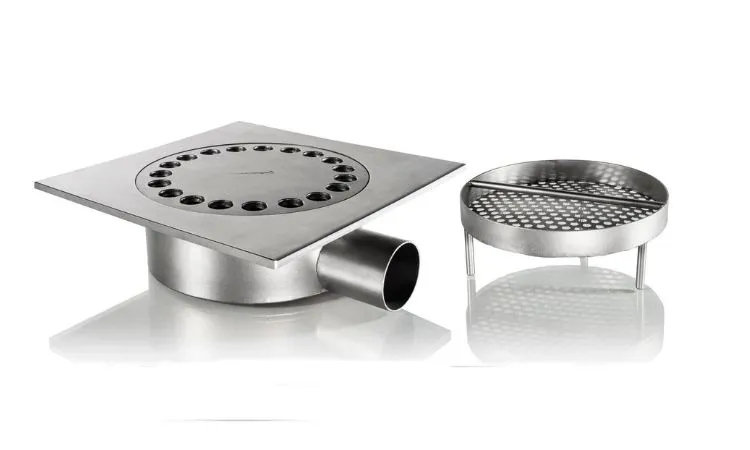Sanitary plumbing alludes to the connecting part of stationed sanitary parts and sewage lines. Toilets, sinks, bathtubs, and showers are some of the examples of stationed sanitary. The pipework between these described sanitary fixtures and the sewage line is important to avoid the following:
- Diseases that spread by ponding water. Because this water causes mosquitoes and other germs to spread and make your life difficult while using any of these sanitary fixtures.
- Loss of comfort due to odors of health hazard sewage matters.
Floor traps, floor wastes, and floor vents are installed to avoid these problems. In This blog, we will discuss the difference between floor trap and floor waste.
Importance of Floor Traps and Vents:
As the water flows into a pipe, the air is pushed ahead, creating a positive pressure in the direction of water while creating a negative pressure in the opposite direction. If the negative pressure somehow increases above the positive pressure, the foul air and gasses make their way out of the trap.
The floor traps and vents are open to the outside and air can enter the system and prevent pressure variations. In this way, the positive pressure remains dominant in the direction of water flow. This may look simple in design but it increases the pipework and cost.
Qualities Expected From a Trap:
Following are the qualities that are expected from a floor trap.
- Cleaning the trap should be easy.
- It should be compatible with the drain.
- It should have a self-cleansing attribute.
- Traps should have a finely finished surface.
- It should maintain an efficient water seal irrespective of the water flow.
The floor traps and wastes are quite often confused with each other. In this article, we will explain both floor traps and floor wastes in detail and end this confusion once and forever.
Floor Traps:
Floor Trap prevents foul gasses from entering the building by providing a water seal. The minimum depth of the water seal should be 50 mm. Floor traps are installed to collect the wastewater bathroom, shower area, kitchen sinks, wash basins, etc.
Check Out Our Services
These traps are available in a variety of sizes and shapes and under a variety of outlet conditions. Many do not have a water seal at all and also come with poor finishing of the surface. Floor traps are also available in PVC, UPVC, and Cl. Removable grating is provided on top of the traps.
The Following things must be kept in mind while using floor traps.
- Poor quality traps are a major source of leakages.
- Deep seal multi-inlet p-traps are suitable to avoid leakages.
- Water seals of the traps installed in a less used area can vanish away because of evaporation.
- The water should be added periodically to the traps to keep the water seal fresh.
- Floor traps should not be exposed to freezing conditions.
- 95 mm grating with 8 mm diameter holes must be provided at the top of the traps. This prevents cockroaches and other insects from entering the building.
Floor Waste:
Floor wastes are used to provide drainage for the accidental spillage of water. Floor wastes are usually installed at the low point of a graded floor. The floor wastes have the following types:
- Dry-type floor waste
- Trapped floor waste
- Floor waste gully
Dry-type Floor Waste:
A dry floor waste consists of a flush floor grating and a discharge pipe. The discharge pipe either directly discharges the spilled water or through a gully trap. It is important to note that dry floor waste does not have a water trap, so do not connect it directly to the sewer line.
Trapped Floor Waste:
A trapped floor waste is exactly similar to a dry floor waste but it has a water trap that allows it to be directly connected to the sewer line.
Floor Waste Gully:
A floor waste gully (FWG) is used to collect wastewater from multiple fixtures. The number of fixtures depends upon the number of discharge pipes and distance. They are space-saving and reduce the number of connections required to the drain and the length of pipework.
Things to remember while installing floor wastes
- The floor depth must be appropriate to fit the unit if you are installing an FWG.
- For suspended floors, discharge pipes from floor wastes and FWGs that run within the depth of the floor are best run parallel to the floor joists.
- FWG for ground floors is supported in a compact granular fill and set on a concrete base.
- Be careful to select the right floor waste for the spillage of your wastewater.
Conclusion:
Floor trap and floor waste are the common terminologies used in sanitary plumbing. These are essentials to prevent foul gasses from entering the building. These terminologies are completely explained in the article.
For More Information, Click here.


